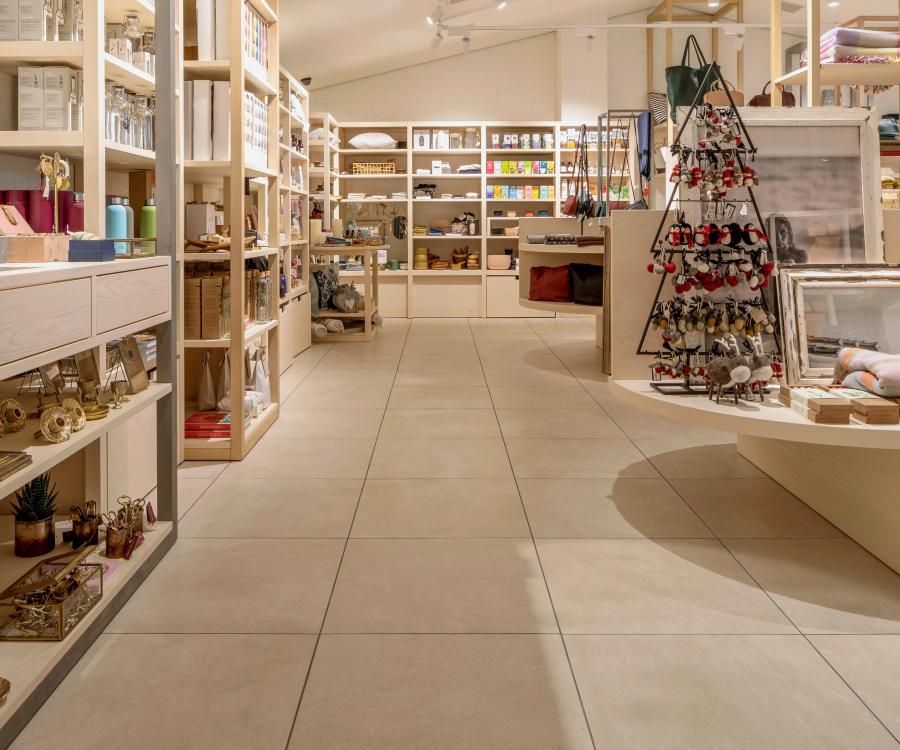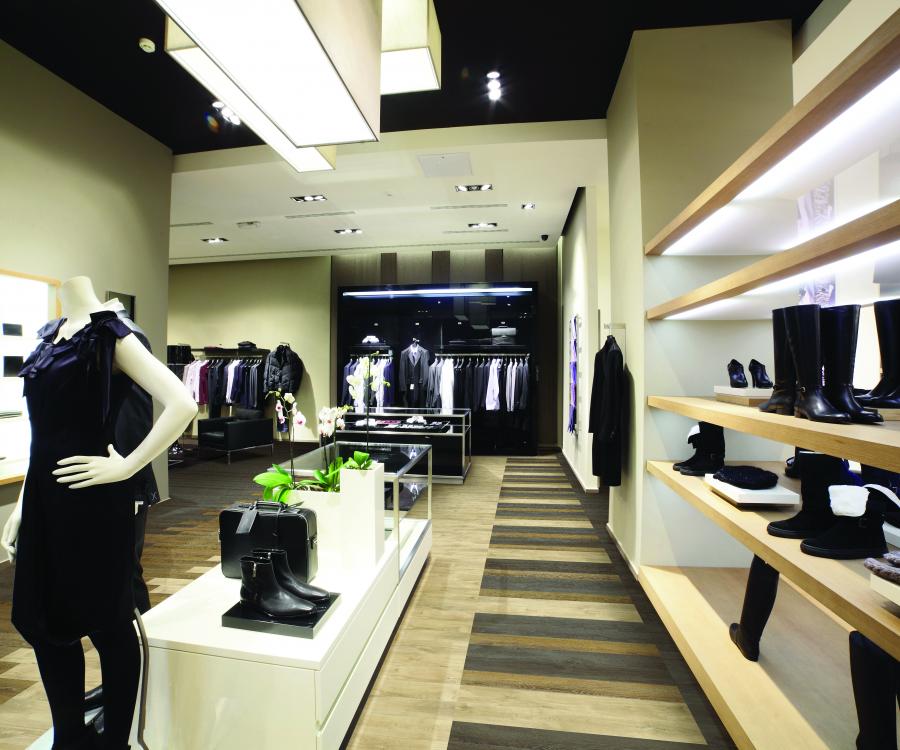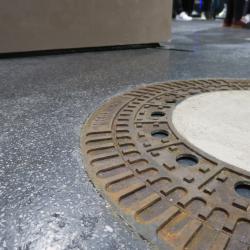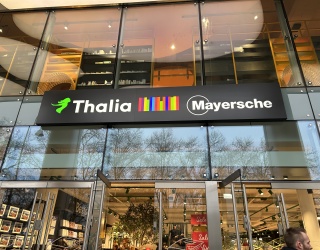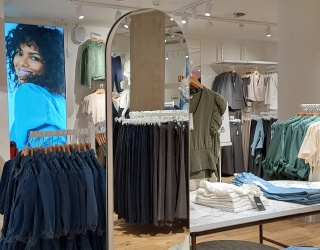
Werner Ziegelmeier has worked for over 30 years in the tile industry. As Head of Public Relations at Agrob Buchtal and its parent company Deutsche Steinzeug, he battles prejudice and has more in store than just advertising slogans: ceramic tiles are made of natural raw materials and offer many design possibilities. In shop fitting and recreational facilities, they are usually something unique. And in swimming pools where tiles are virtually at home, they can help to save energy.
You were involved in the first European indoor swimming pool in Bamberg that meets Passive House Standard certification criteria. How do tiles help to save energy?
Indeed, we broke new ground here with a pool edge system that was jointly developed by the builder and the planning agency. The main criterion was the considerable reduction in pool water evaporation. This aspect is energetically relevant for the Bambados in Bamberg with its total of around 1,800 square meters expanse of water and more than 400 meters of circumferential pool edge. To achieve this target, elaborate investigations with scientifically based methods were conducted. The results are truly amazing: compared to a conventional pool edge, water evaporation here is a whopping 45 percent less. This saves precious energy in warm water generation as well as for air conditioning facilities. They need to circulate less air to where the energy demand for powering the fans decreases. In doing so, a net decrease in power demand by 14,500 kWh/year is forecasted for all of the five Bambados pools.
Of course, the whole thing is also supposed to look beautiful. You are proud of your design awards. Does the multitude of awards really offer an orientation guide?
Esthetics rightly plays an important role in many areas of life. This is also and especially true for wall covering and flooring, which just by the area alone that they cover, significantly shape the overall impression. Ceramic tiles provide outstanding design possibilities and have long established themselves as an integral part of contemporary architecture. One visible sign for this is the fact that we were able to garner over 35 coveted design awards over the past few years; among them regularly are the”iF award“, the”Red Dot Design Award“or the ”Design Prize of the Federal Republic of Germany“– distinctions so rich in tradition that it is not just our company that deems them among the most important awards of their kind.
Of course, you can argue about the orientation help, but these types of competitions fulfill valuable basic functions: manufacturers can directly compete with their business competitors and be judged by a top-notch expert jury panel. Prospective buyers receive tips on products with superior design quality – no more and no less.
Together with the AIT magazine, you have offered an award for architects. Why?
Our”Tile Award“ that was awarded in 2010 for the first time ever, was met with such great response that we were practically forced to continue and the contest is now once again taking place. What is special about this award is that it is aimed at architects and interior designers 35 years old and younger, who we in-house lovingly call the ”wild youth“. We are hoping for results that even amaze us “tile people”.
Which trends do you currently see in the architecture of recreational facilities?
Due to our contacts with architects from different cultural groups, we can state a certain pluralism of styles. The scope ranges from puristical minimalism to biased opulence and strongly depends on the particular case, that is to say the specific purpose and of course the vision of the investor and the architect. Regardless of the style, there is one big commonality: aspects such as sustainability are the focus. We gladly touch on this subject, since ceramic tiles are extremely sustainable and have stood the test of time when the term was not even around yet.
Keyword sustainability or “green building“: what is the eco balance for Steinzeug tiles?
The crux of the matter is that terms like eco balance, sustainability or “green building” are nationally and even more so internationally interpreted differently. Ceramic tiles are made of natural components such as clay, kaolin clay or feldspar. We deliberately do not obtain the main raw material of clay from the Ukraine or other far off deposits, but rather from our own clay mines or sources in the immediate periphery of our four plants, which by the way are all located in Germany. This means short transit routes and environmental protection right from the start. Needless to say, burning ceramics uses energy since this is a “moldable fired stone“ which is also apparent in terms like stone ware (“Steinzeug”). However, this is virtually negligible if you contrast the expected useful life: for tiles, depending on the type, 30, 50 or even 100 years and more. In addition, the energy consumption tends to continue to decrease. By using natural gas, we use one of the cleanest of all energy sources. At the end of their long life cycle, ceramic tiles are not hazardous waste, but rather uncomplicated building rubble that is in great demand as filling material in road construction for instance.
How can swimming pools or bathrooms in older hotels be inexpensively refurbished? Do old tiles always have to be removed?
Particularly in the areas you just mentioned, there are high functional, optical and financial requirements, since a hotelkeeper or swimming pool owner of course also needs to think about return on investment. That said, modernization does not necessarily involve horrendous costs and old tiles do not always need to be removed. One smart solution for instance is to install new tiles on top of the old tiles, so that noise and dirt are being minimized. In addition, we have just created a new generation of extremely slim tiles under the “Flatile” header. Even other types of flooring such as the still widely popular carpet in hotel rooms can elegantly, fast and economically be replaced with long-lasting and value increasing ceramic tile flooring.
Are floor tiles getting bigger and bigger?
Medium-size proportions around 30 x 30 centimeters have become less important. The trend goes towards either small delicate mosaic tile or majestic large tiles around 60 x 120 centimeters in size for instance that convey superior elegance in XXL format.
How do you keep your tiles and grout in good condition? What are the most common mistakes in maintenance?
The worst mistake is if you experiment unnecessarily with different remedies. This can cause sticky layers to form, which can prevent proper cleaning or conversely make the surface so slick that traction is negatively impacted. We improve already excellent performance characteristics by applying a finishing coat that is permanently burned-in under high temperature into the enamel. Aside from being extremely easy to clean, these tiles have antibacterial properties without any chemicals and sustainably improve the ambient air by breaking down air pollutants or disturbing smells.
How can you design roofs or facades with tiles?
At times, our products are also used for roofs. Years ago for instance, we delivered gold-colored tiles for the dome of a sacral building in Africa or just recently special ceramic elements for the Museum of Cultures in Basel, which was designed by Herzog & de Meuron. Realistically speaking however, these are exceptions, because this area falls more into the domain of roofing tiles. Even though they are closely related to ceramic tiles in terms of material, they differ in regards to visual appearance and application technology.
When it comes to facades and storefronts, even architects or investors do not necessarily immediately think ceramics, even though this material is predestined for this with good reason. Please allow me to briefly highlight some of the many advantages. Ceramic is colorfast and light resistant even during intense sunlight exposure. Another aspect that is particularly relevant for recreational facilities with high foot traffic areas: tiles are fireproof and do not develop toxic gases. But first and foremost, they offer a charming way to pleasantly stand out from the crowd, especially since you do not get to see tiles on every facade.
Interview by René Schellbach, iXtenso.com
01.05.2012
Link tip for eco balance:
”Umwelt-Produkt-Deklaration keramische Fliesen und Platten nach ISO 14025“, (“Environmental Product Declaration for Ceramic Tiles and Stone Pavers based on ISO 14025”) published by Institute Construction and Environment (“Institut Bauen und Umwelt e.V”)


